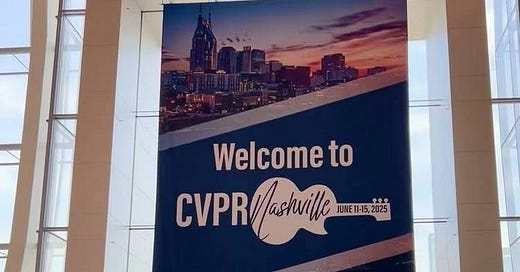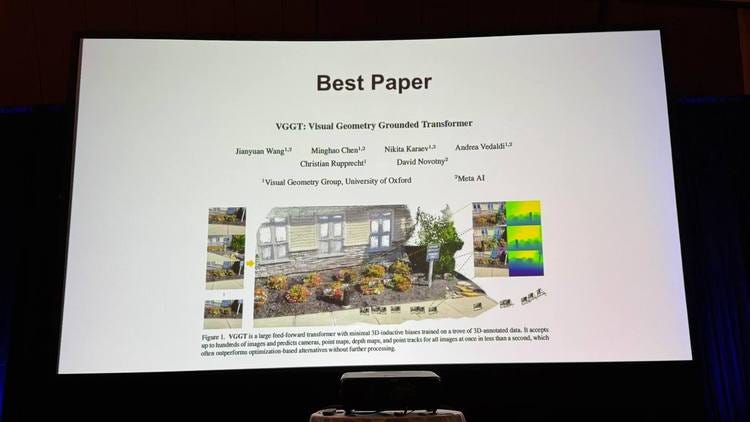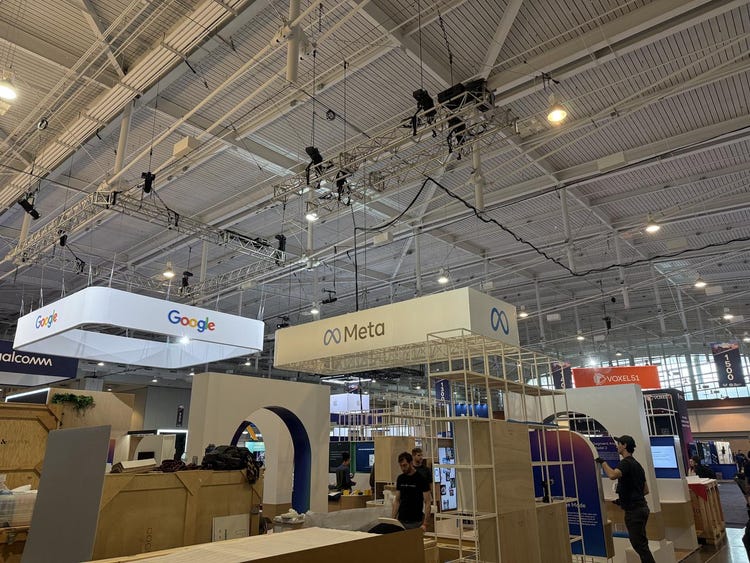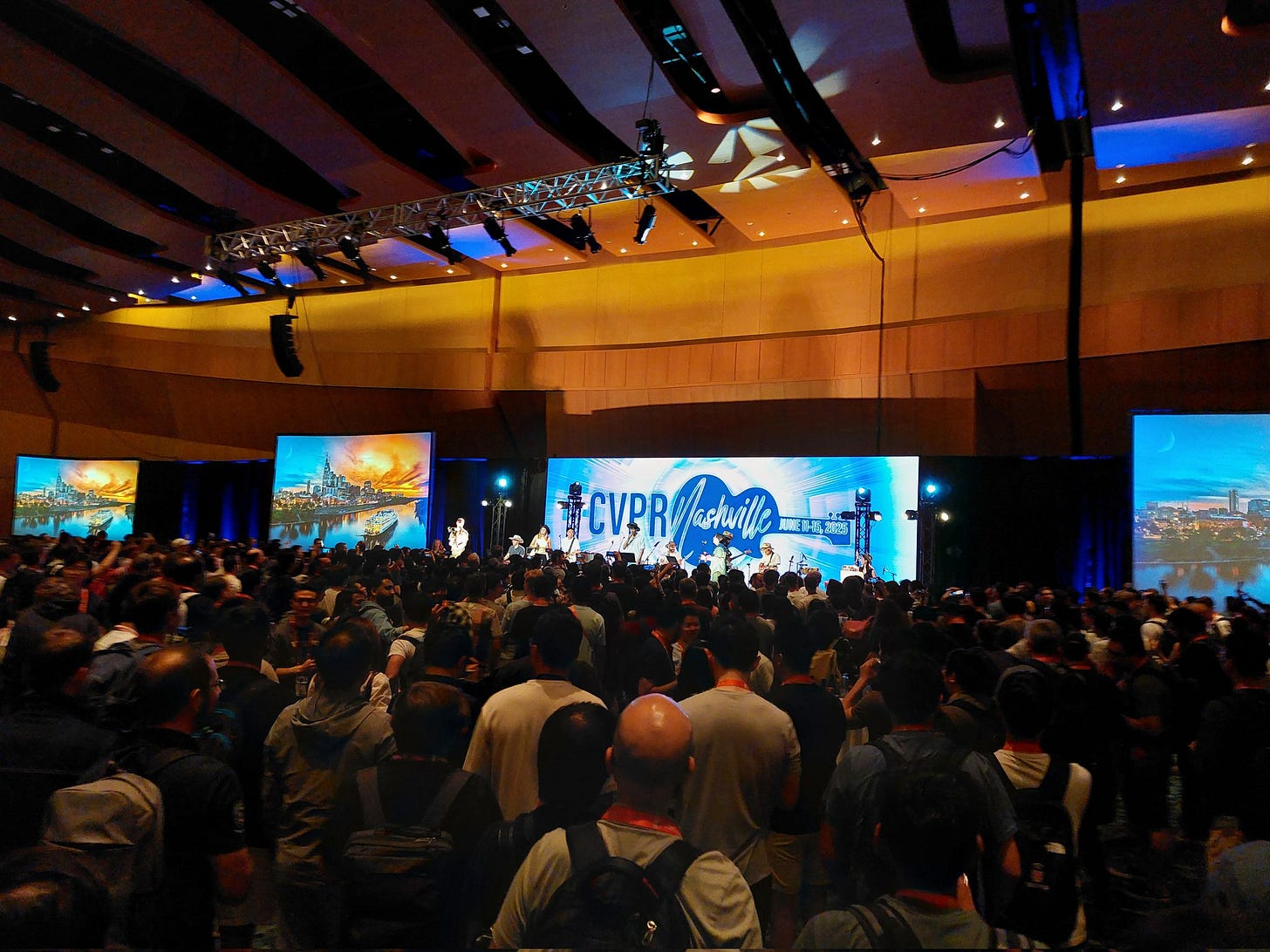Live from CVPR 2025 in Nashville: Best Paper Triumphs, 3D Fever & “World Models” Everywhere
A first‑hand dispatch from the Music City Center, Nashville
Once upon a time, CVPR was a niche academic gathering. That era is over. The conference, held June 11–15 at Nashville’s Music City Center, has fully morphed into the AI and industry arena, where breakthroughs meet business—and buzz is everywhere.
🎖️ Best Paper Goes to VGGT: A 3D Breakthrough
On June 13, over 12,800 attendees packed the ballroom to witness the Best Paper Award going to VGGT: Visual Geometry Grounded Transformer by Jianyuan Wang, Minghao Chen (Oxford & Meta AI), and colleagues .
This feed‑forward transformer ingests one to hundreds of images and directly outputs camera parameters, depth maps, point clouds—and does it faster and more accurately than the traditional multi-step pipeline, all in under a second.
Attendees described the win as “well deserved,” likening its impact to the original ResNet moment .
3D & World Models Take Center Stage
The volume and quality of 3D research exploded this year—workshops on neural reconstruction, real-to-sim for robotics, and 3D Gaussian Splatting were standing-room only .
Generative AI remains hot, but world models—long discussed in RL and robotics—are now ubiquitous in papers and workshops. One standout Oral: Difix3D+, which enhances 3D reconstruction with diffusion-based refinement .
Industry Is Everywhere
Meta, NVIDIA, Google, Apple—you name it—were omnipresent. NVIDIA even clinched its third straight Autonomous Driving Grand Challenge award .
Booths were buzzing, hallways packed, coffee queues long—and every poster prompted the question: “Can this be industrialized?”
The boundary between academic insight and product-ready tech blurred dramatically. Workshops like “Open‑World 3D Scene Understanding” and “Real‑to‑Sim” drew full houses .
Figures in Motion
ResNet’s co-author Kaiming He returned to CVPR this year as a Best Paper Committee member and keynote speaker—after a rare absence in 2024. His presence was felt everywhere, from panel stages to hallway selfies. Whether explaining new architectures or casually chatting near the Meta booth, he remained a crowd magnet
But he wasn’t the only familiar face drawing attention. Yann LeCun—Meta’s Chief AI Scientist and a Turing Award laureate—co-authored one of this year’s Best Paper finalists on controllable world models for embodied navigation.
Cordelia Schmid (INRIA & Google) continued to be a guiding force in multimodal and efficient learning systems, and Antonio Torralba (MIT) brought fresh perspectives to scene understanding and VLM grounding in open-world settings.
Meanwhile, Raquel Urtasun drew a full house in the autonomous driving workshop, where she spoke on bridging academic research with scalable self-driving deployment through her company Waabi.
Some of these luminaries couldn’t make it 10 steps in the poster hall without being stopped. Between selfies, student meetups, and spontaneous Q&As, CVPR continued its tradition as a full-contact sport for academic fan culture.
Global Talent on the Move
CVPR 2025 once again spotlighted the incredible diversity of talent across the global AI community. Leading this year’s Best Paper was Jianyuan Wang, a PhD candidate jointly at Oxford’s Visual Geometry Group and Meta AI, with co-author Minghao Chen also from Oxford and Meta GenAI. Finalists included MegaSaM by Zhengqi Li, extending last year’s award-winning work.
Standout contributions came from across continents:
Paul Henderson (University of Edinburgh) co-authored key research on 3D Gaussian Splatting that drew packed poster sessions.
Jean-François Lafleche (Université Laval) presented novel techniques in real-time scene reconstruction that pushed the limits of photorealism.
Daniel Sykora (Czech Technical University) was recognized for his creative work in explainable vision models bridging computer vision and digital art.
Rising stars from institutions in Europe, North America, and Southeast Asia also made their mark in the student paper awards—reinforcing CVPR’s role as a truly global stage for AI and computer vision research.
The buzz extended far beyond the sessions themselves. Hallway meetups, impromptu demos, and LinkedIn-firestorm networking gave the event the feel of a global tech marketplace as much as a top-tier academic conference.
In Summary
CVPR 2025 in Nashville wasn’t just another academic conference—it was a full-on AI tech festival. With 40k+ submissions (22 % acceptance), this year cemented 3D transformers, world models, and industrial AI as the future of vision research.
If there’s any FOMO left, it’s because CVPR might just be where tomorrow’s AI gets built today.












